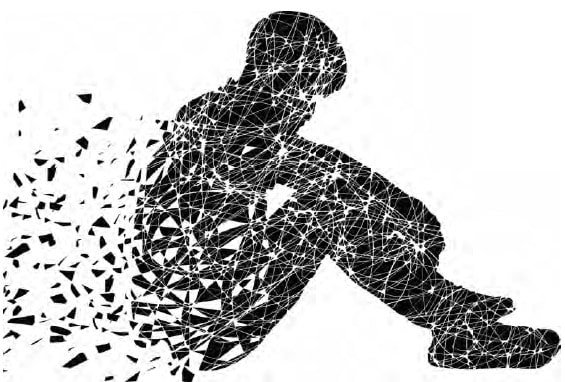The high-profile deaths of celebrity fashion designer Kate Spade and chef-TV personality Anthony Bourdain within a week of each other highlighted a quiet grief affecting increasingly more Americans and their families: the contagion of suicide growing from coast to coast.
In June, the Centers for Disease Control released a national study on suicide, finding the U.S. suicide rate had risen 25 percent since 1999. Nearly 45,000 people above 10 years of age died by suicide in 2016 — an average of 123 people per day.
The sobering report also concluded suicide rates had increased in nearly every state from 1999 to 2016.
In half of states, suicide rates increased by 30 percent or more, led by North Dakota, which saw a 57.6 percent increase in its suicide rate. Only Nevada saw a net decrease in suicide deaths (-1 percent).
Although suicide has been a leading cause of death in the U.S. for decades, the suicide rate had actually dropped for a time. Between 1979 and 1998, the suicide rate decreased from 12.1 per 100,000 to 11.3 per 100,000.
More than mental illness
People close to the suicide victim, as well as those who make a professional study of the phenomenon, are trying to find the answer to “why.” But data-driven insights into why a person takes their own life are in short supply.
According to April Foreman, a psychologist and board member of the American Association of Suicidology, while suicide has been a leading cause of death among Americans for decades, only a token amount of funding has been dedicated to suicide research. “To put it into perspective, we fund suicide research at the same rate as we do research on smallpox,” she told Our Sunday Visitor.
The “grossly underfunded” state of suicide research has left scientists operating with their best guesses as to what has been driving this public health crisis, said Foreman.
Many people in society conclude suicide is only related to mental illness, but Foreman explained the evidence does not support that conclusion. In fact, more and more suicides occur without an attributable mental illness.
The CDC reported over half of men and women who die by suicide had no known diagnosed mental illness. From post-mortem reports, researchers found that prior to their deaths, 42 percent had relationship problems, and nearly 30 percent were dealing with a personal crisis or harmful alcohol or drug use.
One possible theory is that suicide rates are driven by strain. According to Jie Zhang, a sociology professor at Buffalo State College, two conflicting facts can put pressure on a person — for instance, their personal aspirations versus what they have accomplished, competing personal beliefs or the perception of being worse off than peers. Many will turn to suicide to resolve their frustration, especially if they already feel divorced from their social setting.
“The higher the level of strains, the higher the suicide rates,” said Zhang.
Zhang pointed to an increased frustration with aspirations in the United States, as many found themselves unable to improve their lives significantly, while Foreman said that Americans possibly were experiencing a widespread sense of being relatively worse off than their peers.
But Zhang said deaths from suicide are not the only figure to consider in examining widespread strains on American lives. When taken together with deaths from opioids — more than 42,000 in 2016, the highest year on record — a stark picture emerges of the malaise affecting American society.
Higher risk out west
The western United States has a persistently higher suicide rate than the rest of the country. Montana has the highest per capita suicide rate — 29.2 deaths per 100,000.
Matt Brower, executive director of the Montana Catholic Conference, told OSV the state’s geographic and social isolation tended to exacerbate personal problems and made it difficult to connect individuals with available mental health services.
And the unique culture of the West, with its emphasis on self-reliance, can cause people to be less likely to reach out for help, he said.
Brower also pointed to the breakdown of families and communities as another trend driving the suicide rate.
“The fabric that can be there to help support people is eroding,” he said. “I don’t think that’s unique to Montana, I think that’s across the board.”
Taking suicide seriously
Jean Hill, the director of government liaison for the Diocese of Salt Lake City, told OSV that the report confirmed the astonishing prevalence of suicide in Utah. The state suicide rate increased by 46.5 percent in 17 years and had the fifth highest suicide rate per capita in 2016, the last year available for suicide records.
Hill also noted that the push for assisted suicide in Utah also risked normalizing suicide in the eyes of their youth, who already have a high suicide rate compared to the rest of the country.
“Saying that any suicide is acceptable is not a great message to send in a state where we do have all these young people choosing that as their solution,” she said.
Hill said Utah is taking the explosion of suicide seriously. The legislature has increased funding for suicide prevention lifelines in the state and has been pursuing “evidence-based programs” to reduce Utah’s suicide rate.
But while the government plays an important role in suicide prevention, local communities and churches have significant roles to play as well. Hill said that parishes could be an important resource for supporting members who are going through mental health issues and disseminating information on who to turn to when feeling suicidal.
“We need faith leaders to have enough training to recognize it and know when to bring in professional assistance,” she said.
Shutterstock photo
| Reading the Signs, Lending Support |
|---|
|
Faith leaders can play an important role in recogizing the warning signs of someone who may be considering suicide. People who may be in danger include those who talk about killing themselves, or say they feel hopeless, trapped or like a burden. Other behaviors, like withdrawing from activities, becoming isolated from family and friends, increased alcohol and drug use, or sudden aggression or fatigue can also be signs that a person is in distress. Changes in behavior are especially significant if they come after a painful event or loss. If someone seems like they might be considering suicide, ask them directly if they are. Suicide is preventable. For support, call 1-800-273-8255 or visit suicidepreventionlifeline.org for more information.
|





